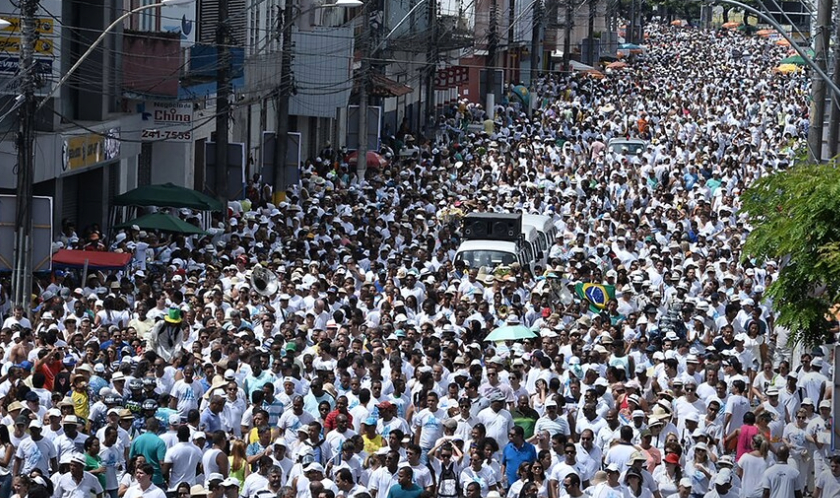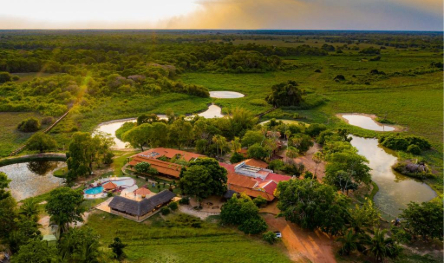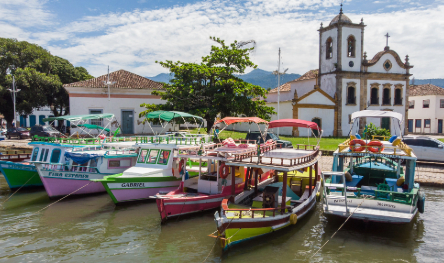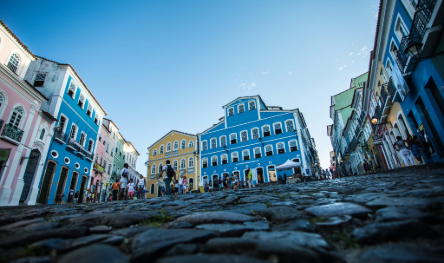The Lavagem do Bonfim, translated as the "Washing of Bonfim," is a symbolic act of cleansing and purification. It is held in honor of Senhor do Bonfim (Lord of Bonfim), a Catholic figure whose image is housed in the Bonfim Church. The event represents a fusion of Catholicism and Candomblé, an Afro-Brazilian religion.
Key Elements of the Lavagem do Bonfim:
1. Procession to the Bonfim Church: - The central activity of the Lavagem do Bonfim is a grand procession that starts at the Church of Conceição da Praia and continues to the Bonfim Church. Participants, including devotees, Baianas (women dressed in traditional Bahian attire), and musicians, make the journey on foot, covering a distance of about 8 kilometers.
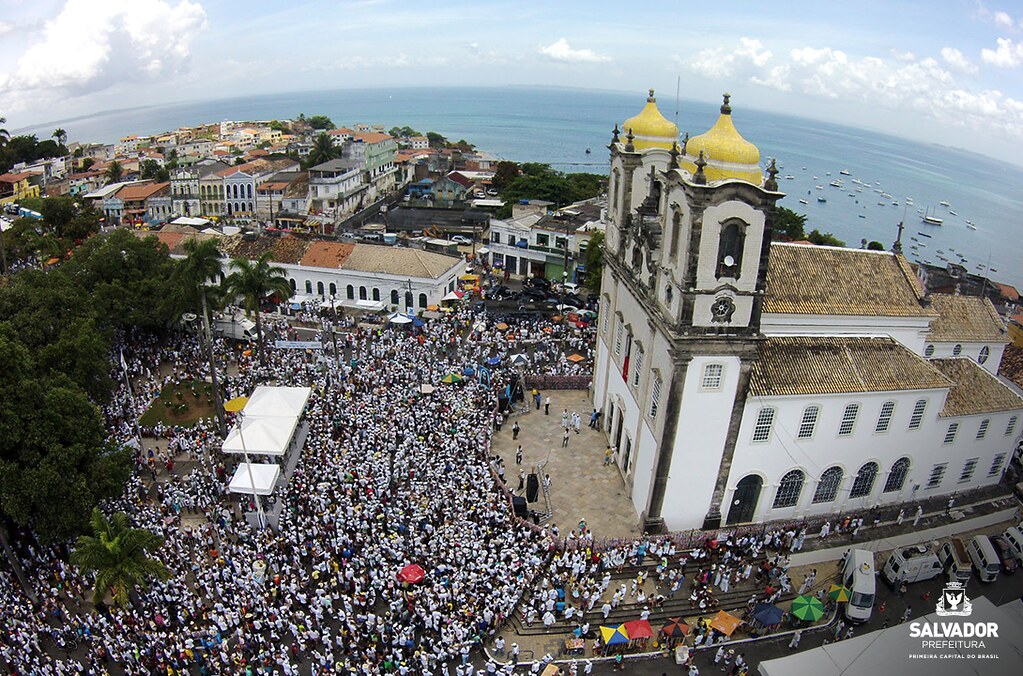
(Foto: Max Haack / Prefeitura de Salvador)
2. Baianas and Symbolic Cleansing: - Baianas play a crucial role in the Lavagem do Bonfim. These women, dressed in white and adorned with colorful turbans, carry water-filled jars and use them to ritually cleanse the steps of the Bonfim Church. The act symbolizes purification and blessings for the upcoming year.
3. Catholic and Candomblé Elements: - The Lavagem do Bonfim is a unique example of syncretism, blending Catholic and Candomblé rituals. While the event is associated with the Catholic Church, many of its elements, such as the use of water for cleansing, have roots in Afro-Brazilian religious practices.
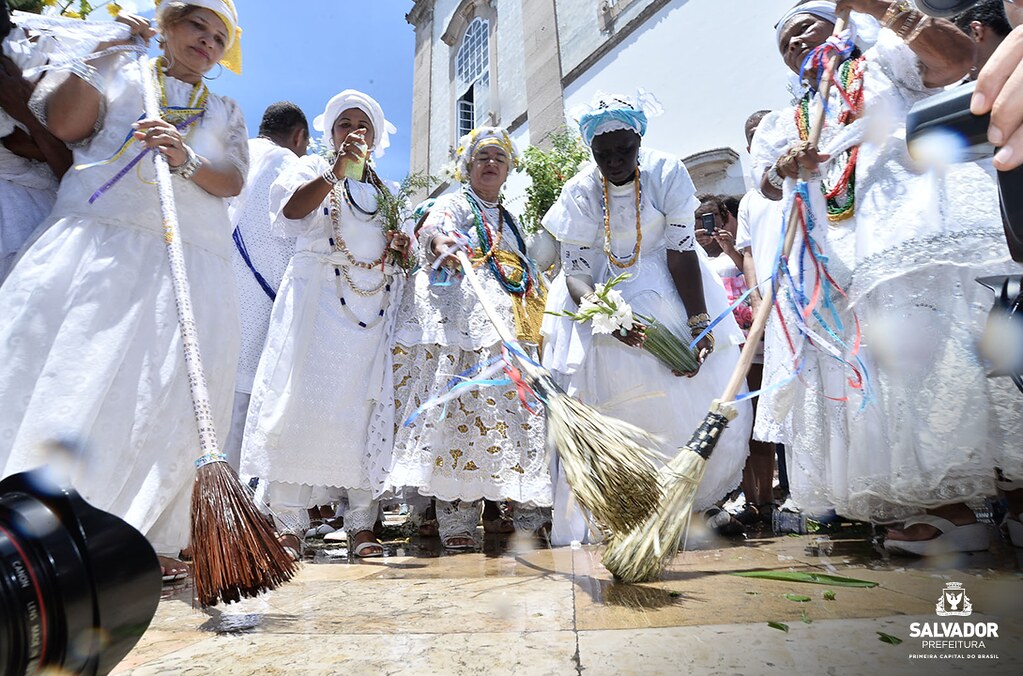
(Foto: Max Haack / Prefeitura de Salvador)
4. Traditional Clothing and Music: - Participants, especially the Baianas, wear traditional Bahian attire, including white dresses, turbans, and beaded necklaces. The procession is accompanied by lively music, including drumming and traditional Bahian rhythms.
5. A Festive Atmosphere: - The Lavagem do Bonfim is marked by a festive and joyful atmosphere. Along the procession route, there are street vendors selling traditional food, drinks, and religious items. The event brings together people from various backgrounds to celebrate their shared cultural heritage.
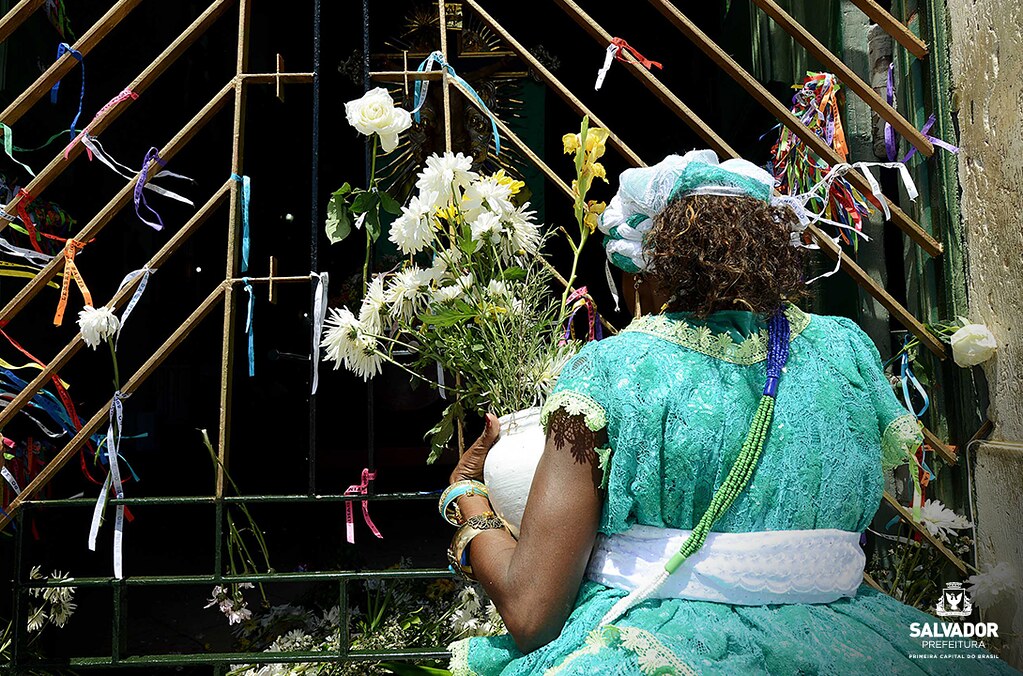
(Foto: Max Haack / Prefeitura de Salvador)
How to Experience the Lavagem do Bonfim:
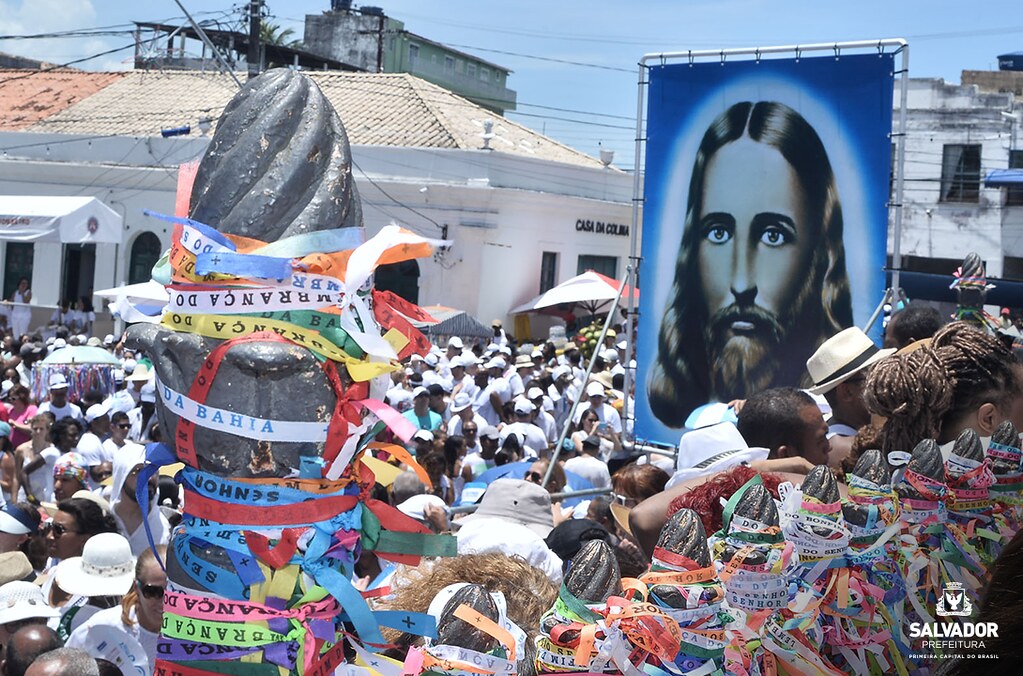
(Foto: Max Haack / Prefeitura de Salvador)
1. Plan Your Visit: - The Lavagem do Bonfim typically takes place in January, with the main procession occurring on a Thursday. Check the exact date each year and plan your visit to Salvador accordingly.
2. Join the Procession: - Consider joining the procession from the Church of Conceição da Praia to the Bonfim Church. The walk provides a unique opportunity to experience the event alongside locals and participants.
3. Witness the Ritual Cleansing: - Position yourself near the Bonfim Church to witness the symbolic cleansing of the church steps by the Baianas. This ritual is a central and visually striking aspect of the celebration.
4. Explore the Festivities: - Explore the festive atmosphere along the procession route. Sample Bahian cuisine, enjoy the music, and engage with the local community to fully immerse yourself in the Lavagem do Bonfim experience.
5. Respect Local Customs: - While participating, respect the religious and cultural customs of the event. This includes wearing white attire, showing reverence during rituals, and being mindful of the sacred nature of the Lavagem do Bonfim.
The Lavagem do Bonfim offers a fascinating glimpse into the cultural diversity and religious syncretism of Salvador, making it a memorable and enriching experience for those seeking to explore the unique traditions of Bahia, Brazil.

